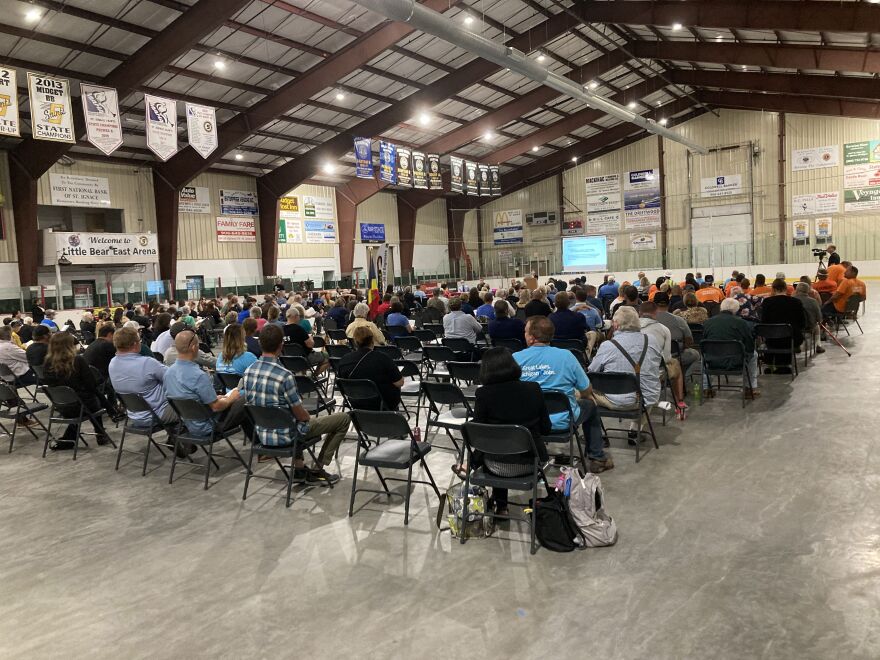It was July 2010: Jennie Hoffmann was living in Marshall, when she noticed a strange smell.
“I called the police and said, ‘there's this really funny smell outside. It's just been all day. And tonight it's still there,’” she said.
Hoffmann said the police told her there wasn’t any serious issue.
“My son and I actually went down to the Ceresco Dam to check it out,” Hoffmann said. “We were breathing all that terrible smell and saw, ‘oh my gosh, look at that black stuff in the water.” I mean, it took the community a while to wrap their head around what had happened.”
At the time, Hoffmann didn’t realize she was seeing what would be considered one of the largest inland oil spills in US history.
Line 6B, owned and operated by Enbridge, burst and released a million gallons of crude oil into the Kalamazoo River. It took five years of clean-up efforts and more than a billion dollars to restore the river.
Over a decade later, Hoffmann hasn’t forgotten the spill. Today, she lives in Moran Township, and her home overlooks the Straits of Mackinac.
“Sometimes, [the Straits are] as clear as glass, very little movement,” Hoffmann said.
Since she moved to Moran, Hoffmann said she’s feared a repeat of the Marshall spill. But now, she’s worried about the potential adverse impacts from the Great Lakes Tunnel project. She said the state should stop investing in fossil fuels and focus on sustainable energy.
“If we are trying to upgrade a system, why are we going back in time and making it worse? I don’t get that at all,” she said.

On a tour, Hoffmann takes me to the shoreline where the current pipeline crosses the Straits - and where the proposed tunnel would be constructed.
“It doesn’t look like much, does it?” she said. “So the tunnel is between here and Patty Peek’s house. That’s the proposed tunnel, I believe.”
The four-mile tunnel would be drilled under the lake bed, and a new pipeline would be installed inside. The State of Michigan would own the tunnel, but Enbridge would be responsible for the cost of construction and maintenance.
Enbridge declined to interview on this topic, but in an email, company spokesperson Ryan Duffy said the tunnel will make the “safe pipeline even safer” - and ensure the delivery of energy without the risk of another anchor strike.
The original 2018 cost estimate for the tunnel was $500 million. Duffy said an updated number is to be determined, but Enbridge has already spent more than $100 million on the project.
Construction of the tunnel would take four years, but the project’s completion depends on state permitting.

The tunnel is currently being assessed by the Army Corps of Engineers for an environmental impact statement or EIS. The EIS will consider the effects of the tunnel on water quality, cultural resources, treaty rights, public health and climate change, among other factors.
Carrie Fox is a public affairs specialist with the Army Corps. She said the EIS is wrapping up the scoping phase - in which the Army Corps collects public comments.
“The limits [of the EIS] are kind of hard to talk about because the reason we're doing the EIS study is so that we can learn what those limits are,” Fox said. “The scoping process will help the Corps of Engineers identify the scope, and range of issues to be analyzed in the EIS.”
After the scoping phase, the Army Corps will release a draft for public review. The final EIS will describe the potential impacts of the tunnel project and identify alternatives. Fox says the whole process will likely take 2-3 years to complete.

“A shortcut through the Straits of Mackinac, where we've got 20% of the available freshwater resources is just absolutely unconscionable, we would never permit that today,” said Roger Gauthier.
Gauthier is an environmental consultant and former hydrologist with the Army Corps of Engineers. He said pipelines are the safest way to transport oil, but the need to do it through the Straits is unnecessary.
As far as the EIS, Gauthier said he has faith the Army Corps will do a thorough job in their environmental review. He just hopes the focus on the risk associated with the existing pipeline isn’t lost in discussions of the tunnel.
“We're still looking at the risk of failure of that line, and not following this shiny object called the Great Lakes tunnel,” he said.
Back in Moran Township, Jennie Hoffmann said she’s not sure what to expect, as far as Line 5 is concerned. She said she just hopes that Michiganders - who care for and love their water - recognize they’re all on the same side.
Arguments concerned with energy or jobs, she said, are a distraction from the issue at hand.
“It’s always Enbridge versus crazy, or Enbridge versus environmentalists,” Hoffmann said. “Really, this is the state of Michigan, this is us, why are we doing this? What’s going to happen to us?”
The tunnel still needs to be approved by the Army Corps and the Michigan Public Service Commission before the project can move forward.
Activists say they will continue to fight the tunnel project and the pipeline until it’s shutdown.
As of the publication of this story, there are nearly 10,000 comments on the online EIS public forum. The last day to submit public comments to the Army Corps of Engineers is Oct. 14.


